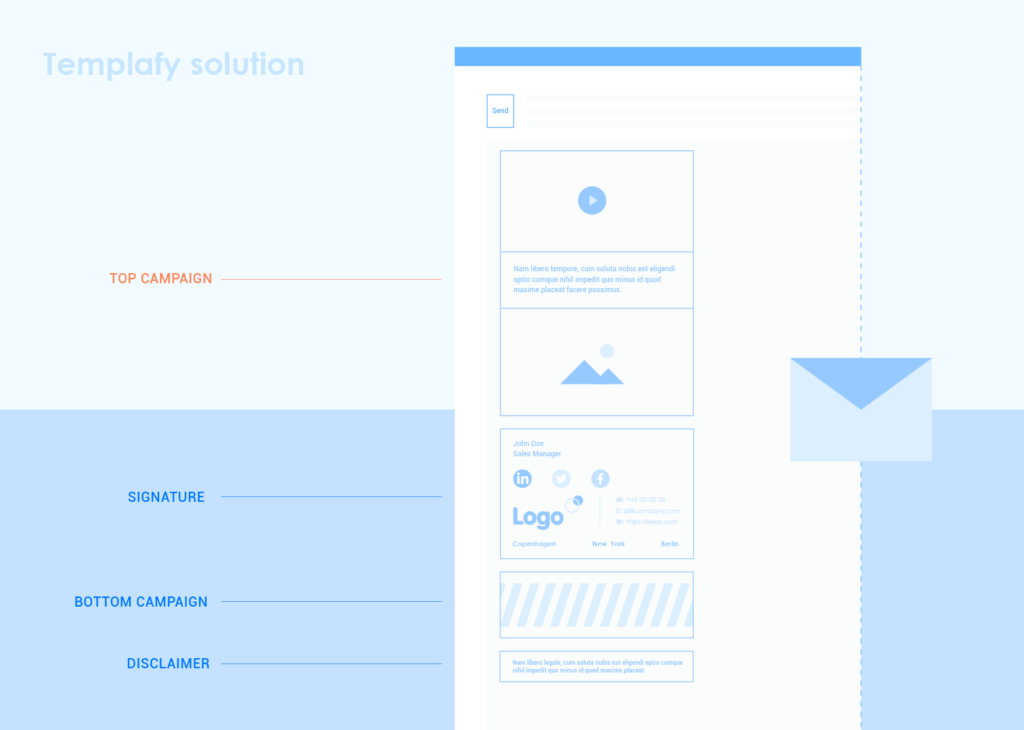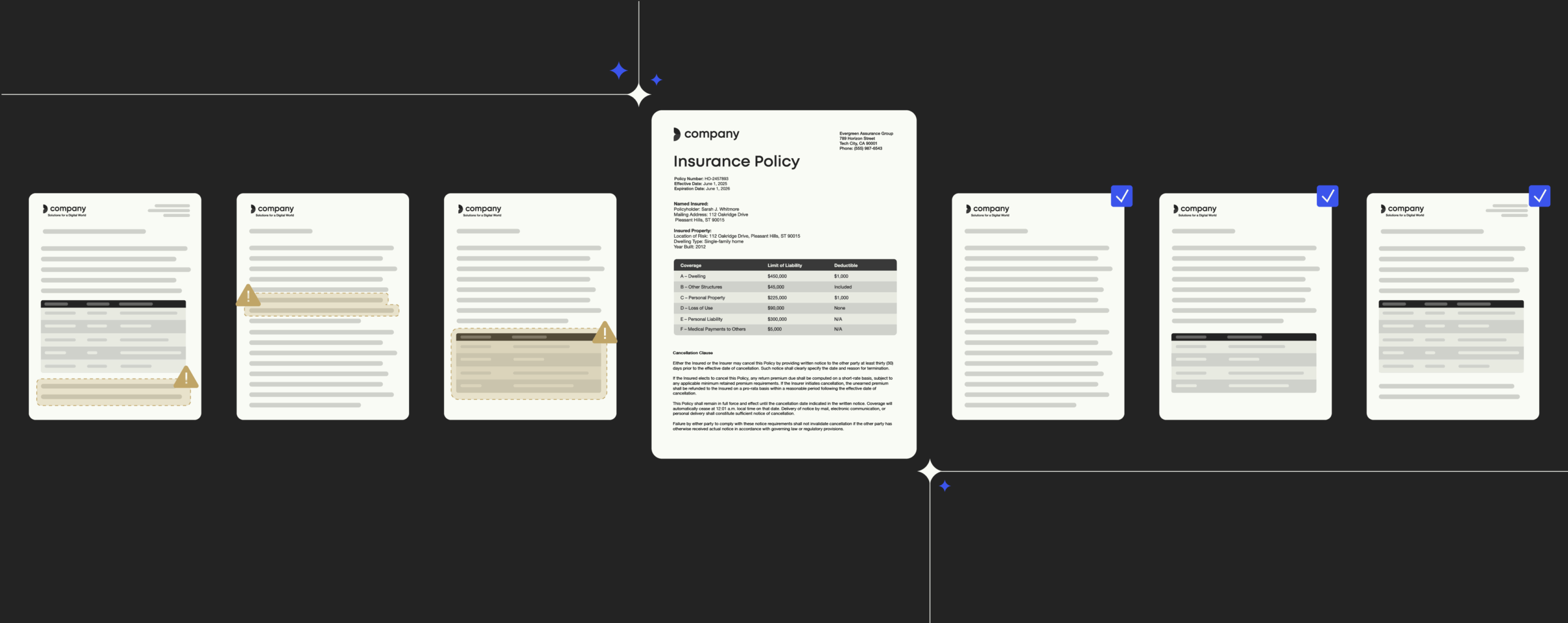How many emails are sent every day? Top email statistics for businesses

Intro
Now that social media and instant messaging platforms are an entrenched part of everyday life, it’s easy to think the world of digital communications belongs to Mark Zuckerberg and co.
However, recent studies in both B2B and B2C markets have proven the continued growth and value of emails, highlighting the need for businesses to continue to maximize efforts in these channels.
It might seem surprising that the humble email is still going strong, so we’ve collated the latest email statistics to explain to you the power this medium still holds, from “how many emails are sent every day?” to “what’s the best day to send an email?” Empowering organizations to make the most of their email communication provides a host of benefits and, despite digital communication developments, email maintains its place of importance in corporate communication.
Top email statistics for organizations
Globally, as of 2019, a staggering 293.6 billion emails were sent each day and there are currently now over 4 billion email users worldwide.
Findings reveal a continual growth in the number of emails sent per day, from 2017’s figure of 269 billion emails to where we are today at 306.4 billion emails daily. For scale, this means 2.4 billion emails are sent every single second – that’s figure so high that it’s difficult to comprehend! The number of email users are growing too: from 2018 to 2019 there was a 100 million increase in the number of email accounts, bringing numbers to 2.8 billion email accounts in the world. That’s half of the global population. These stats are impressive – but what do they mean for your organization?
Email signature marketing guide
Enterprise email signature that are secure and easy to implement
How many emails does the average person receive per day?
The average office worker receives around 121 emails every workday. They send less, with just 40 being the average per day – but that number still adds up to a very large amount of emails organization-wide. If your company has 1000 employees the team will send out 40,000 business emails in just one day. Based on a calculation of 250 business days per year, that culminates in an astonishing 10,000,000 emails annually.
Today’s business culture truly is in emails, with 86% of professionals naming email as their preferred means of business communication and email ranked as the third most influential source of information for B2B audiences – topped only by colleague recommendations and industry-specific influencers.
What is the best day of the week to send emails?
Not surprisingly, optimum email send-out days for B2B and B2C industries differ. Avoiding the working weekend, Tuesday is the best day of the week to send a business email to another business, compared to Saturday for B2C email communications. It’s not difficult to understand these differences based on the product being offered and the amount of time which individuals are using to check personal or professional emails.
Days of the week aside, performance of B2B emails is considerably higher in terms of email open rates and CTRs, with results that are 47% higher than B2C email marketing campaigns. This is an incredibly powerful statistic when you recall how many emails are sent each day and take into consideration that 59% of B2B marketers say email marketing campaigns are their most effective channel for revenue generation.
What does the future of email look like?
By 2023, it is predicted that there will be global email users will number 4.3 billion– so the future is looking bright for email marketing. Email is a unique type of communication in an era where everyone is digitally connected, but for various reasons may opt out of some communication forms, such as social media. Due to its pre-eminence and the fact that it is viewed as a more official form of communication, it’s unlikely that email numbers will lapse in popularity any time soon. If anything, they’re set to continue to rise as people grow more concerned about security fears associated with other communication types, and also turn to use email rather than paper for example with bank statements and receipts. There are already countless eco-friendly ‘paperless’ options for these and this is set to continue. Until a communication form arises which can surpass email, be universally accessible, cost-free and used by a global majority, email will continue to be used at current and increasing rates.
All of this means that email marketing is a field of vast potential. As the statistics show, email enables a huge number and variety of people to be contacted, meaning when organizations can enhance their email communication to support their brand and marketing efforts, there is potential for huge success. Let’s take a look at how this can be achieved.
SUMMARY
How many emails are sent every day?
As of 2017, 269 billion emails are sent each day, and it is estimated that by 2021, 316 billion emails will be sent each day. Given these statistics, it’s vital to ensure companies are using emails for maximum impact, and email signatures are being effectively utilized.
Incorporating email marketing campaigns into email signatures
Did you know that you can incorporate email marketing campaigns into every email signature sent form your organization? An email signature is the sign off at the end of each email sent throughout your organization, and a prime piece of marketing real estate that often isn’t harnessed. With email signature marketing campaigns, every email sent by your staff is a marketing opportunity. For global enterprises with thousands of employees, email signature marketing provides tens of thousands of opportunities to promote your brand and organization every single day.
A lack of email signature strategy fails to seize a huge opportunity to promote everything from brand identity to social channels. We investigate the dangers of poor email signature management in more depth here, but the run-down is that you should treat an email signature as a logo and avoid letting all employees tweak and use it as they want.
The key to successful email signature campaigns is providing offers and promotions that are relevant and targeted. Tools like Templafy allow you to centrally manage email signature marketing campaigns, and administrators can filter them by business unit, region or brand so that relevant campaigns are automatically applied to every company email. For example, a global organization can send out a commercial campaign from all U.S. employees’ emails about a “New product launch!” which has only been released in the U.S. Similarly, new pieces of content can be promoted to the target audience, for example if a whitepaper on branding is released, then email signatures can be filtered to promote this to branding professionals. We’ve explained elsewhere that email signature marketing provides results which lead to more conversions for your marketing team.

How can organizations capitalize on emerging email trends and statistics?
Email tips, delivered
Make every email count with tips on managing on-brand, compliant signatures—plus ways to turn emails into marketing opportunities.
Given the volume of emails sent out and the continuing popularity of this communication form, it’s important that every email sent is seen as a potential branding and marketing opportunity. Every single email has the potential to provide impact, and organizations who realize that will truly harness the power of their emails.
However, it is nearly impossible to ensure that all employees across an enterprise organization are paying attention and utilizing this in the midst of a busy working life. That’s why there are several factors you can implement to automate employee email flows and ensure your email potential is always realized.
1. Use email templates
Email templates are simple and highly effective tools that ensure the recipient is presented with a well-written, well-designed email that is personalized, visually appealing, mobile responsive, and easy to navigate. They’re useful for emails that are sent commonly, or even just pieces of text which are regularly used as they allow employees to insert these into their email with just a click. As a result, employees can create emails much quicker, but they are also sure they are always using the correct look, feel, wording and message. This strengthens your brand identity and approach by ensuring consistency at all email touchpoints.
2. Make content accessible
Templafy’s built-in library offers instant access to brand approved-assets directly in Outlook, meaning adding the correct branded content to emails is simple. Not only is time saved through quick access of content, but it’s also guaranteed to be correct, saving the embarrassment of attaching the wrong pdf, or using an image that is now off-brand.
Employees using asset libraries can trust that they are providing the correct, up-to-date and on-brand content to recipients, meaning each and every email is a brand asset that promotes the organization.
3. Manage email signatures
As previously mentioned, email signatures ensure maximum marketing and targeting impact. Templafy’s Email Signature Manager keeps branding teams in control of email design. It automatically attaches email signatures with the relevant colors, branding, disclaimers, and campaigns. Through central control, signatures can be filtered and controlled to ensure maximum impact across the organization. It’s also possible to add tracking codes to links in the emails, to better understand recipient behavior and understand what links and content are proving successful and which need a different form of promotion.
Emails are going to continue to be an important marketing and communication tool, so it’s a good time to ensure your organization are getting the most out of them by using the above methods.



